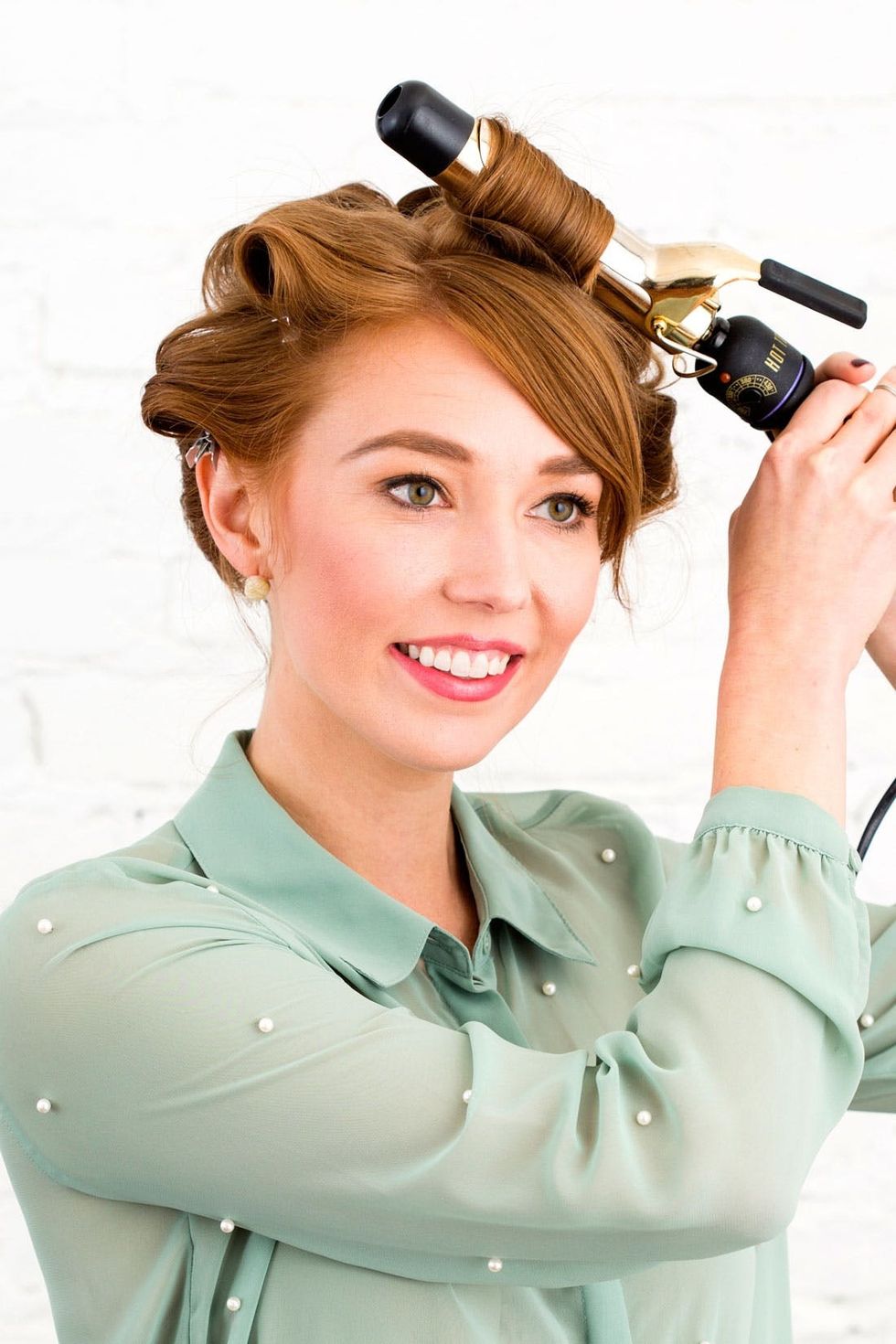How to Style Your Lob like Emma Stone Did at the Oscars


After two best-in-show award show appearances, we had BIG expectations for Emma Stone’s Oscar look. And although the Birdman actress left menswear-inspired clothing completely in the dust for last night’s red carpet ;( , we were stunned by her sometimes gold, sometimes green embellished Ellie Saab gown (seriously, who else could wear chartreuse with such aplomb?). But the frock wasn’t the only thing that left us swooning: not only will her peachy complexion serve as our go-to spring makeup look, but also her hair, curled into a glam asymmetrical style, gave us major formal styling inspiration. Whether you need a knock-’em-dead look for major meeting or want to elevate your locks for your bestie’s wedding, here’s how to DIY Emma’s Oscars ‘do in just six steps.
Step 1: Heat Protector/Setting Spray

Place a dramatic side part into your hair. Then pick up 2-inch sections of hair and apply Kenra Platinum Hot Spray ($13) to each piece. This is going to help your curls set, give them more longevity and protect your strands from the impending heat.

Start at the roots of your hair and begin curling your 2-inch sections in the direction away from your face, gently pulling the curling iron out to feed the rest of your hair into the iron until your ends are in. Using this technique, the roots will get equally as hot as the ends of your hair, which makes your wave pattern more even in the end. Pull the iron out by gently unclamping it and letting the curl fall into your hand. Use a duck bill clip to hold the curl in place. Clip the base of the curl onto your head leaving the top portion of the curl free.
Step 2: Curl + Pin

Continue curling like this until you get to the opposite side of your head. For this side, switch the direction you’re curling in. This allows your curls to fall more naturally. Keep pinning your curls like before until your entire head is covered.

Let your hair set for about 15 minutes or until your pin curls no longer feel warm to touch. Pro tip: This is a more effective way of making your curls last longer. Then remove the clips — your curls should be Shirley Temple-level bouncy.
Step 3: Cool + Remove Clips

This step is the key to this look. Starting on the side with the dramatic side part, use your fingers to gently break apart the curls and blend them into one another for a softer look. Define the shape by twirling them around your fingers and lifting them into place with your hands. Move slowly: you can always break it apart more, but you can’t revive the bounce.
Step 4: Tousle + Shape

In order to create that striking asymmetry, break apart the curls less as you move to the other side of your head. If you have short hair, leave the curls on that side of your head almost completely intact — they won’t need bobby pins to stay in place! If you’re a girl with longer hair, then you will need to fake the length faux bob style. Check out how to pin your hair in an asymmetrical style using this tutorial as an example.

On the side of your head that has the smaller section of hair, pull your hair behind your ear and use a wax like product like TIGI Bed Head Hair Stick ($13) to smooth the hair down.
Step 5: Sleek Down

Finish by spraying your hair with a lightweight touchable hairspray like Kenra 25 Volume Spray ($20) to really seal the deal — these curls aren’t going anywhere.
Step 6: Spray

It’s official: these Emma-approved red carpet curls are our new go-to formal hairstyle.

What was the most DIY-able beauty moment from the Oscars? Tell us about your favorite looks in the comments below.











